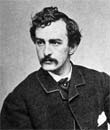
Day-by-Day Timeline of Events
February 4, 1861
In an effort to settle the issue of slavery, representatives of some twenty-one states meet in Washington, D.C. to form the Washington Peace Conference. The conference runs until February 27th.
February 22, 1861
Abraham Lincoln, the President-elect of the United States, arrives safely in Washington, D.C.
April 15, 1861
President Lincoln calls for a special session of Congress to discuss the growing rebellion in the south.
April 16, 1861
With the stroke of a pen, President Lincoln abolishes the practice of slavery in Washington, D.C.
April 19, 1861
The New York 7th Regiment begins their march to Washington, D.C. to help bolster defenses there.
June 27, 1861
Union numbers defending the Union capital of Washington, D.C. now number close to 40,000 men.
July 16, 1861
Forces under the command of Union General Irvin McDowell are on the march from Washington, D.C. towards Manassas, Virginia.
July 22, 1861
After heavy losses incurred by both sides, the Battle of Bull Run is over. Federal forces retreat hastily back towards the safety of Washington, D.C.
July 27, 1861
Having assumed his new post near Washington, D.C., Union General George McClellan arranges the Army of the Potomac.
August 23, 1861

September 13, 1861
President Lincoln turns down a request by Chicago-area group to issue an emancipation proclamation. The president is convinced the action would sway border states to the Confederate cause.
November 18, 1861
Author and poet Julia Ward Howe witnesses a review of Union troops outside of Washington, D.C. inspiring her to produce a new work.
April 16, 1862
Following the abolition of slavery in Washington, D.C., Congress pushes through a measure to compensate former slave owners in the D.C. area.
June 6, 1862
The Army of Virginia (formerly the Army of the Potomac) is now handed to General John Pope per President Lincoln's order.
July 11, 1862
General Henry W. Halleck is appointed General-in-Chief over Washington, D.C. by President Lincoln.
August 26, 1862
Stonewall Jackson and his forces are able to pass between Washington, D.C. and the army of General Pope.
September 2, 1862
Union General Pope orders his forces to retreat to the outskirts of Washington, D.C.
September 2, 1862
Union General John Pope is relieved of command of the Army of Virginia by order of President Lincoln.
September 7, 1862
General George McClellan begins a slow advance away from Washington, D.C. to meet the Confederate threat emerging from Virginia.
September 22, 1862
President Lincoln's Emancipation Proclamation is set to take effect on January 1st, 1863. The proclamation covers only those slaves in Confederate-governed states but excludes those border states supporting the Union.
May 31, 1864
The "Radical Democracy Party", a divisional group of the Republican Party, nominates former Union General John Fremont to run against incumbent Abraham Lincoln in the 1864 election.
July 2, 1864
The Wade-Davis Bill of 1864, covering a proposal for reconstruction of the South following a conclusion to the war, is passed by both houses of Congress. However, much to the dismay of Radial Republicans, Lincoln does not sign the bill. Instead it is vetoed as Lincoln looks for a less severe plan. Authors of the Wade-Davis Bill are Senator Benjamin Wade (Ohio) and Representative Henry Winter Davis (Maryland).
July 2, 1864
With Washinton, D.C. as the primary target, cavalry forces led by General Jubal Early raid into Maryland. The operation would span into July 13th.
July 9, 1864
The Battle of Monocacy in Frederick County, Maryland, sees a Union force (commanded by Lew Wallace) of 5,800 strong go up against a much larger Confederate army of 14,000. The successful delay of General Jubal Early's troops, en route to Washington, D.C., makes it a Union strategic victory. Washington, D.C. is reinforced in the mean time.
July 11, 1864
Fort Stevens in Washington, D.C. is fired upon by elements of Confederate General General Early (the Battle of Fort Stevens). This occurs during a visit by President Lincoln.
December 26, 1864
President Lincoln, by letter, personally thanks General William Sherman for his successful campaign - his 'March to the Sea' - which began on November 15th that finally delivered Savannah, Georgia in time for Christmas.
March 17, 1865

April 14, 1865
On this date (Good Friday), President Lincoln is shot by actor John Wilkes Booth during the play "Our American Cousin" at the Ford's Theater in Washington, D.C. Other targets of the attack are Andrew Johnson and William H. Seward.
April 19, 1865
Lincoln's funeral procession takes place down Pennsylvania Avenue in Washington, D.C.
April 21, 1865
The Lincoln Funeral Train departs Washington, D.C. en route to Springfield, Illinois.
May 2, 1865
Acting President Andrew Johnson places a bounty of $100,000 on the head of Confederate President Jefferson Davis.
July 7, 1865
Mary Surratt, George Atzerodt, Lewis Powell and David Herold are executed for their part in the plot to assassinate President Lincoln. The executions by hanging take place at Fort McNair in Washington, D.C.

